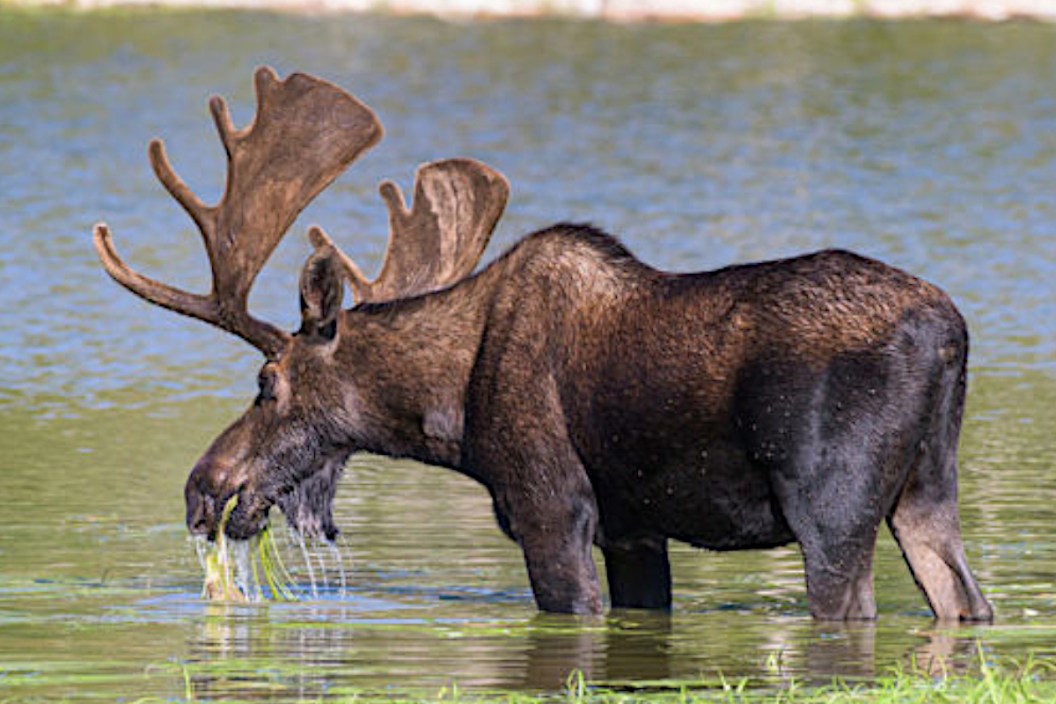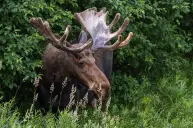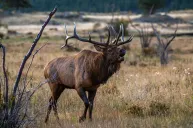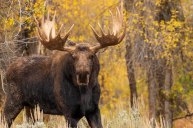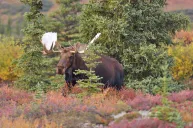When you're ready to check that moose hunting trip off of your bucket list, here's where you should start.
Moose hunting is an something many folks never get to try. If you ever do have such an opportunity, though, you're going to have to start thinking about it long before you ever go.
Big-game hunting is everyone's dream, whether it's black bear or elk, but for the average American, it can seem like it will only happen in a foreign country like Canada, Russia or some Scandinavian nation.
Once the seasons are over and just a memory, it's time to think about planning such a trip. Moose tags can be difficult to obtain and usually gotten via the lottery system, but big-game hunters need not be defeated just yet: most moose hunting packages from reputable guides come ready with a tag and hunting license included in the costs.
Long before the hunting season begins in North America, the serious moose hunter will be ready. While tags aren't cheap, nor easily obtained, you can still plan a moose hunt without ever leaving the United States. There are thousands of square miles of moose country in the U.S. that can be hunted, and here are the five best places to start. Grab your bow, rifle, or muzzleloader. Because the action gets hot fast in these states, especially during the rut.
5. New Hampshire
The Granite State is nestled between Vermont and Maine in the northeastern U.S., right on the border with Quebec.
This area of New England is known for its regulated moose hunt—with only around 124 lottery permits given—but as of the 2014 season, every single permit holder harvested a moose.
While the eastern moose has had its share of issues in the last decade, they are still a viable hunting prospect.
4. Idaho
As you will quickly see, all of these states have boundary lines touching the Canadian border. While Canadian moose hunting is some of the best in the world, it's still Canada. We have our own moose here in America, thank you.
Idaho is one of a few states that have a subspecies population of Shiras moose. They are smaller than the average moose, weighing in at around 850-1,000 pounds. Success in Idaho is also near 100 percent. This is an extremely popular state for nonresidents to try archery hunting since the bull moose are plentiful and the hunting areas vast. There are also plenty of outfitters to help you out on your adventure.
3. Washington
The northeast part of the Evergreen State has the highest density of moose, also of the Shiras variety. Since Washington State borders Idaho, a hunter will need to be aware of exactly where he or she is and whether they are on public or private lands.
The U.S. Forest Service controls some areas along with timber companies and private land owners. After a cold day's hunt here, you may need some time by the wood stove.
2. Maine
Of the Lower 48 states, Maine has the highest moose population density of them all. It is the Maine Department of Inland Fisheries and Wildlife that you will need to obtain your Maine moose permit from, specific to regional areas of the Pine Tree State.
Should you be able to get a tag for the North Maine Woods region—land owned by the private lumber industry—you have entered the moose hunting mecca of the east, and could walk away with a bull that may have upwards of a 50-inch spread.
1. Alaska
The subspecies of moose that is the largest of all is the Alaska-Yukon variety, and the Last Frontier State has plenty of them. Mature bulls in the 1,500-1,800-pound range with an antler spread of 65 inches are not unheard of.
In Alaska, all non-residents must be accompanied by a guide during moose hunting season. It does not matter which season dates you schedule your hunt, where your hunt may take place, or what hunting methods you use. Trust us, if you have never hunted moose before, you will want their help with the moose calling and the butchering and quartering anyway. Especially with a large, trophy bull. Alaskan residents and natives know that the oldest and biggest bulls will be the first to move from their summer range areas and into the higher elevations.
Finding them in heavily forested areas with thick brush is tough, but worth it. Be ready to climb hills or trudge through the mud that surrounds streams and lakes, because that's how you put yourself into areas that are most attractive to moose.
The bottom line is that you need to be prepared, both physically and mentally.
A moose hunt anywhere in North America is not only a challenge of the mind and body, but financially, as well. Just procuring the tags alone can cost upwards of thousands of dollars, not to mention the expense of hiring a legitimate guide service.
Applications for such tags take months in advance to apply for, but with big bulls and a high success rate in mind, the hunt of a lifetime for a trophy moose can be yours.
Products featured on Wide Open Spaces are independently selected by our editors. However, when you buy something through our links, we may earn a commission.
Looking for a little more? Follow my webpage, or on Facebook and Twitter.
NEXT: VIDEO: THIS MOTOR BOAT COULDN'T ESCAPE A SPRINTING BULL MOOSE
WATCH
